February Roundup: Vacation Edition
Unexpected delights encountered while traveling solo through Oaxaca and Mexico City.
When I finally decided to pull the trigger on a two-week trip — my first proper vacation since going full-time with Abel two years ago — I did what anyone would do: I posted an Instagram story asking for recommendations.
As it turns out, I’m possibly the last New Yorker to visit Oaxaca and Mexico City and my friends delivered on sending through their bookmarks and maps. By the end of my Story’s fleeting 24-hour lifecycle, I had more recommendations than I could feasibly explore in a lifetime — let alone one week in each city.
While I was and continue to be grateful for all the amazing suggestions I received (and I did check out as many as I could during my trip, trust me!), I’ve decided to recap some of the unplanned things I experienced abroad — the people and places I might have missed out on had I tried to maximize and plan for every second of my trip.
There’s probably/definitely a lesson in there, especially for someone like me who has a literal travel planning Notion template. This trip has already taught me a lot in so many different ways, and I’ll definitely be processing it for a long time. In the meantime, I’m excited to share a few vignettes with you now.
La Buena Impresión
I admittedly started out my trip with my face a bit buried in my phone, constantly checking my location in relation to the constellation of map pins saved by my friends. I wanted to hit as many as possible! Then, on my second day, I accidentally walked in the wrong direction and as I passed by a large open garage, spotted a giant mysterious machine in the very back. Intrigued, I entered.
What I had stumbled upon was La Buena Impresión, a printmaking workshop that houses a multidisciplinary gallery, residencies, and workshops for both emerging and established artists. The machine that had caught my eye was a 1909 Voirin electric lithography press — one of 20 that exist in the entire world.

A man named David who worked at the workshop spent time showing me around, and I was able to watch artists work while he explained the lithography printing process. The press felt like a sailboat, not just in size but also in how it required multiple people working in tandem to operate, kind of like a choreographed ballet — it was mesmerizing.
As I left the workshop, I realized I never would have found it if I had followed my map correctly or had been looking down at my phone while I walked by. After that, I decided I would try to spend less time looking things up on my phone, and more time just looking up.
Tipográfica Azteca
The best pastry I had in Mexico was one I wouldn’t have been able to find on a map, because it wasn’t sold at a bakery — it was sold out of a window of a sign shop in Oaxaca.
Eduardo Sergio Sánchez López’s product is simple: if you need a sign for your place of business, he can make it. But these aren’t just any off-the-shelf ‘Vacancy’ or ‘No Smoking’ signs — Eduardo prints each sign on his letterpress, with simple but delightfully-expressive typography and the occasional cheeky graphic.
As for the humble selection of pastries sitting in the front display case — those, he explained to me, are baked by his wife Dalia. A true entrepreneurial power couple! I got a slice of Pay de Elote, which I still dream about, and a few signs that I plan on framing. Each one cost 30 pesos, roughly $1.50 in US dollars
La Calenda
To be fair, even if I had my nose buried in my phone, I don’t think I could have missed the calendas. Calendas are traditional Oaxacan street processions that take place outside the church of Santo Domingo in the heart of El Centro, complete with live music, dancing, giant puppet figures (monos) and massive spinning balls (marmotas). Seeing one come down the street was witnessing the purest definition of joy — it was impossible not to feel like you were a part of the celebration.
The wildest part was learning these calendas occur every Friday and Saturday, multiple times each day, every week! They usually follow weddings, but can also celebrate other occasions. There are many bars and restaurants that have rooftops located directly across from the church; you could easily spend a few hours enjoying the view and watching the festivities from above as they circle the streets below.
Petricor
Of course, I came across Petricor when the very-hyped taco spot I tried to go to ended up being closed. It’s a small shop that sources most of their products from local farms; they sell the best-looking produce, and use the “less beautiful” fruits and vegetables to make their own sauces, marmalades, ferments, and the like. They even make their own cheese and have prepared foods that you can take to go or eat there.
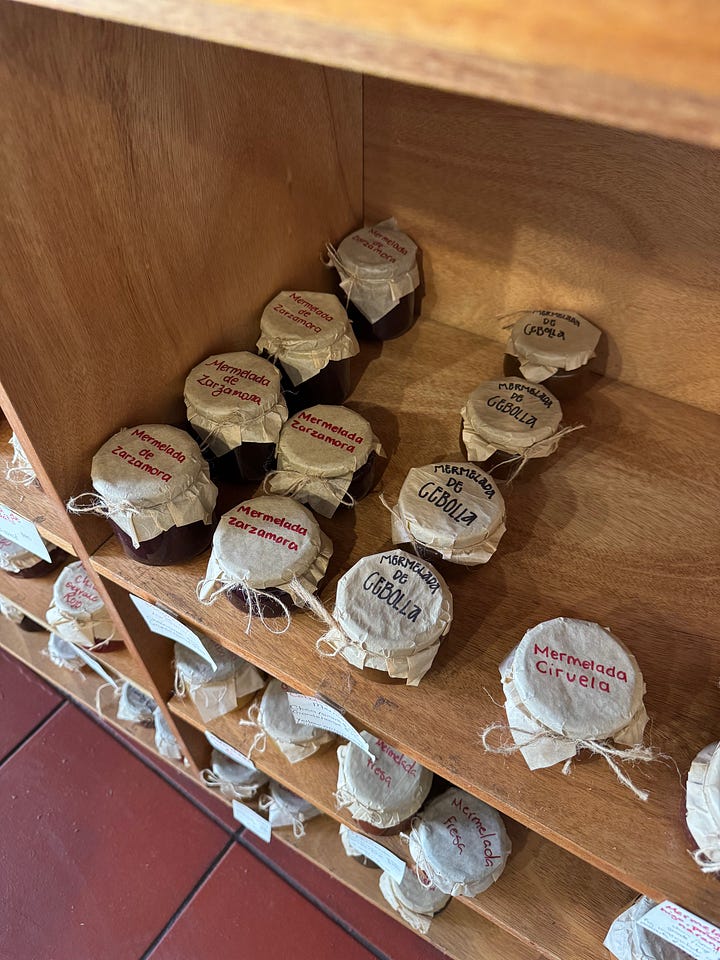
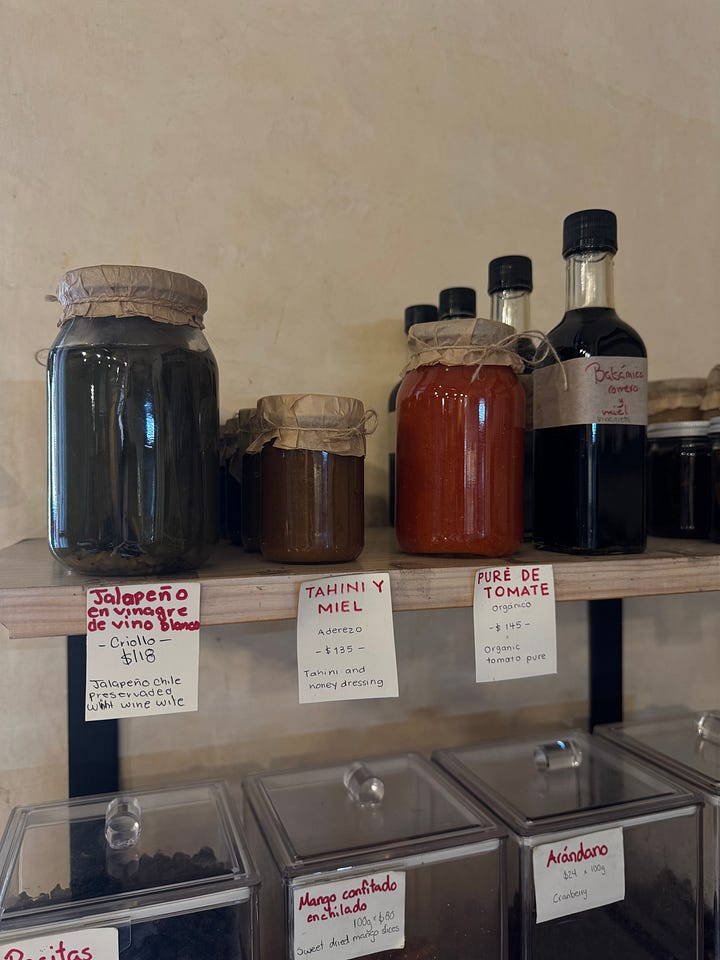
If I lived in Oaxaca it’s a place I’d definitely find myself frequenting, and as a visitor it’s a great spot to pick up some tasty snacks and bites (walk two blocks up to El Llano park if you want to eat outside). I brought home a jar of salsa (shout out to check-in luggage).
A New Friend at Lagunillas Market
One of the most special experiences I had in Mexico began with me wanting to go to La Lagunilla Market, a large antiques market that takes place every Sunday. One of my favorite things to do is peruse antique stores and flea markets, especially when traveling abroad. I had read mixed things about Lagunilla in my pre-trip research, including that it could be dangerous, that you shouldn’t go alone, and that you shouldn’t go unless you can speak fluent Spanish.
Despite these risks and facing a few setbacks on my journey there (including an Uber driver who refused to take me!), I finally made it. One of the first items that caught my eye was a small silver box, which I had seen the previous week in a museum in Oaxaca. I recognized it immediately. The box was made by an American-born designer named William Spratling, one of the most influential figures in Mexican silver design.
The box sat on a small table that belonged to a man named Camilo, who‘s been selling at the same booth at Lagunilla for over twenty years. We started chatting about the other items on his table (incredible silver pieces, mostly jewelry) and it soon become clear that Camilo wasn’t just selling any assortment of second-hand pieces — he was a true collector and expert of Mexican silver antiques. At that point his booth mate cracked open some beers and offered me one, and I ended up spending the next two hours chatting and joking with them in (my bad) Spanish.
Around 5pm the market started closing, and I realized I had to have the silver Spratling box. The problem was, I had no way to pay for it. I hadn’t brought enough cash to cover the cost, and the only ATM in the area wouldn’t accept my debit card. Camilo borrowed his friend’s card reader but my bank kept declining the transaction. Exasperated, I told him, “No sé qué hacer!” (“I don’t know what to do!”).
Even though he lived an hour north of the city, Camilo offered to come meet me if I could figure out a way to get the cash by then. The next day, cash in hand, I met Camilo at a bookstore to do the exchange. Over coffees, he started telling me his life story. His English was about the same level as my Spanish, and we spoke in a funny blend of the two that somehow worked for us. When he mentioned he was headed to CDMX’s version of the Diamond District and invited me to come along, I couldn’t have said yes faster.
We ended up spending the entire day together. He showed me all the places he goes to look for his pieces, pointing out and telling me about various Mexico City landmarks along the way. I got to meet the jewelers and stone setters that work in the floors above street level, just like the ones in NYC. At dinner, I showed him pictures from the museum in Oaxaca where I had first seen the Spratling box. He pointed to each and every piece in the photos, able to immediately identify the designer of each. He told me the particular box I had gravitated towards, he had found it more than ten years ago. It had sat on his table for sale at Lagunillas every Sunday since then.
The next day was my final day in Mexico City, and I met up with Camilo one last time before I left. He gave me a present: a pair of earrings he had sourced during our day in the jewelry district together, and a tiny silver box — he knows those are my favorite.
One of my desires for my trip to Mexico was to learn more about the country’s silver industry and history, and I couldn’t have dreamed of a more extraordinary way to do so. There were multiple points on the way to Lagunilla where I could have turned back, but something told me to keep going. If I hadn’t listened to my gut, I never would have met Camilo.
If there's one thing this trip taught me, it's that the magic of travel (perhaps life?) often lives in the unexpected — in the small detours, chance encounters, and the spaces between the places you set out to see. I know these memories will stay with me much longer than any checklist ever could. This trip is evidence that staying open to people and possibilities makes life a much more colorful story.




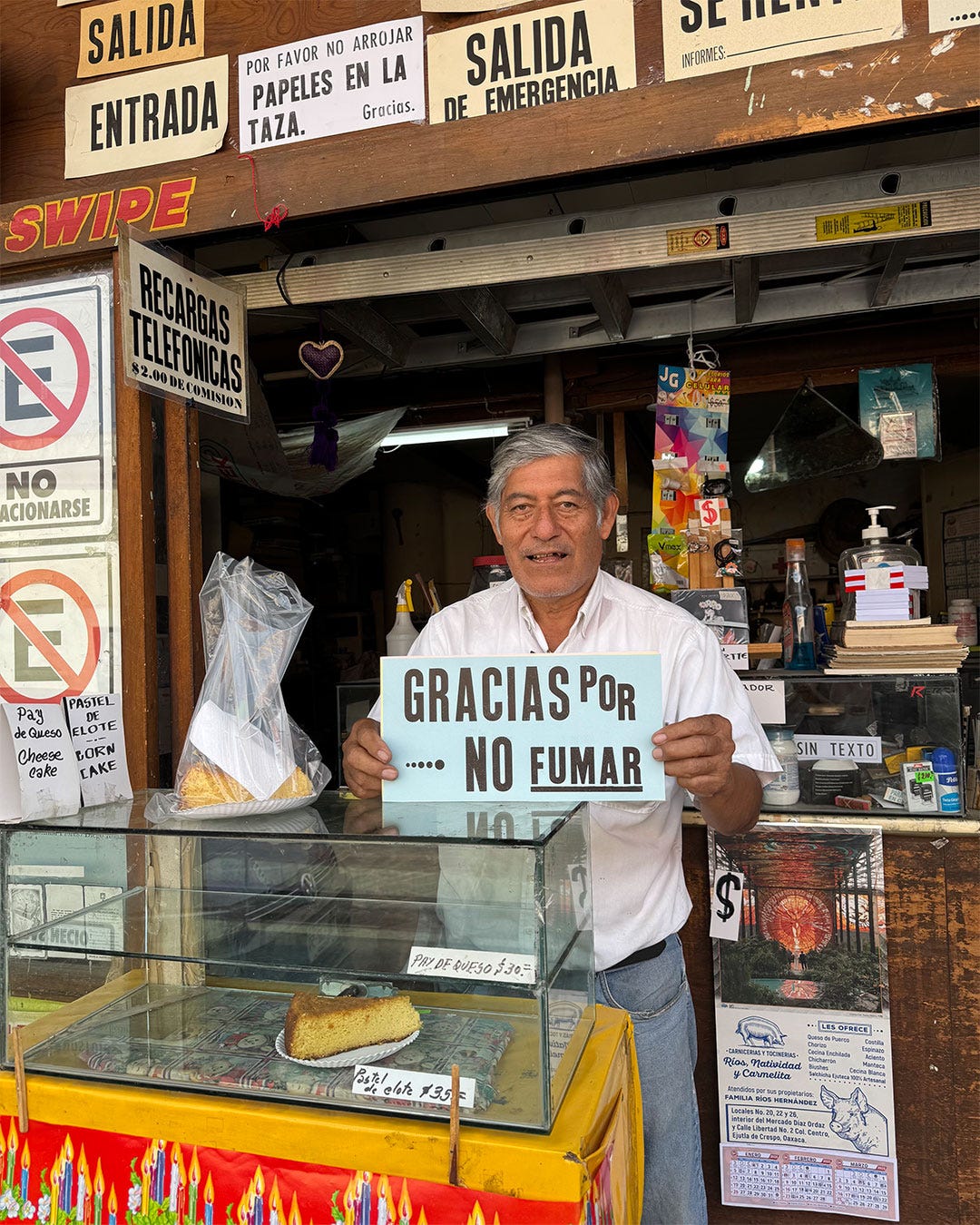
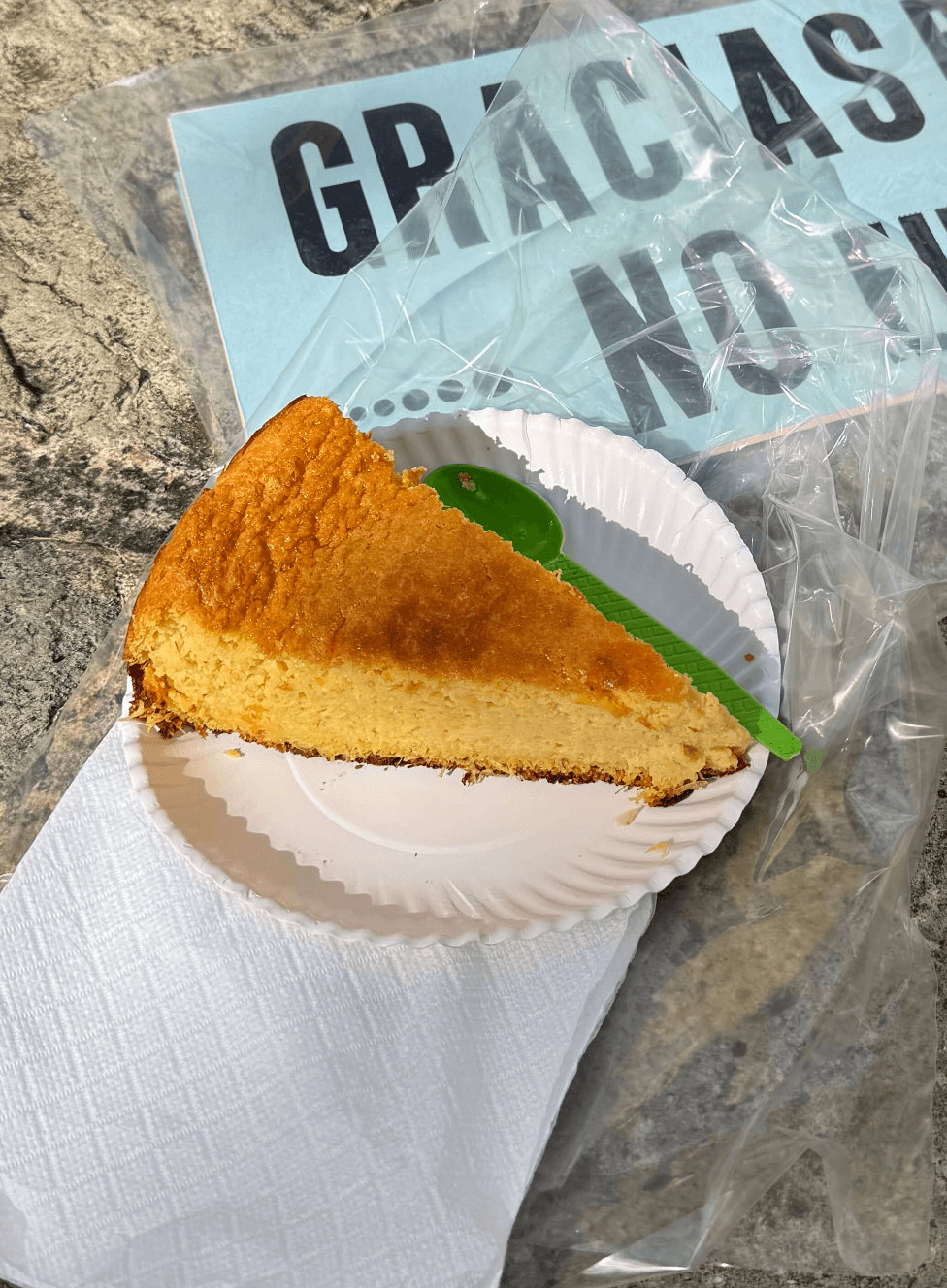

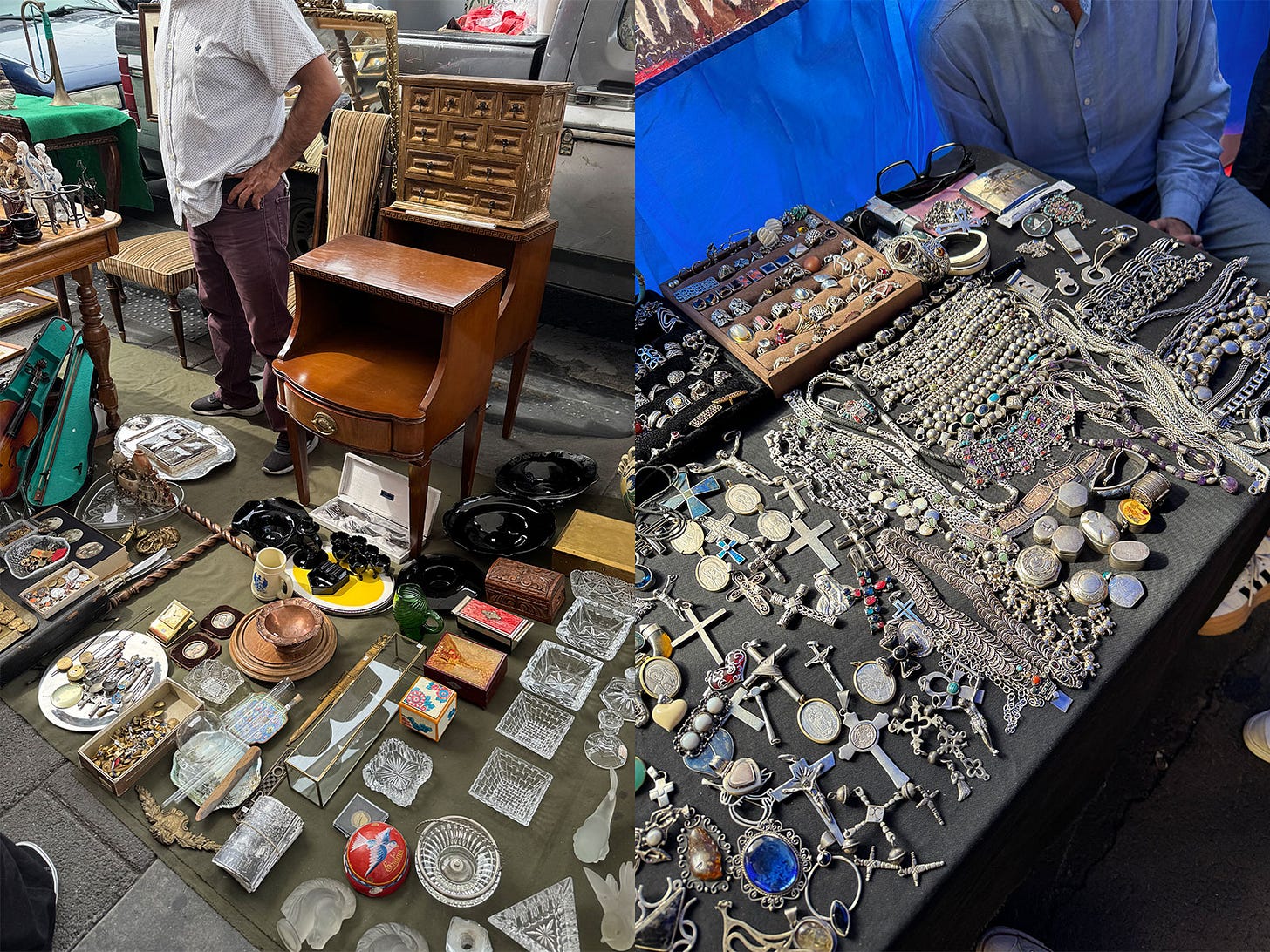

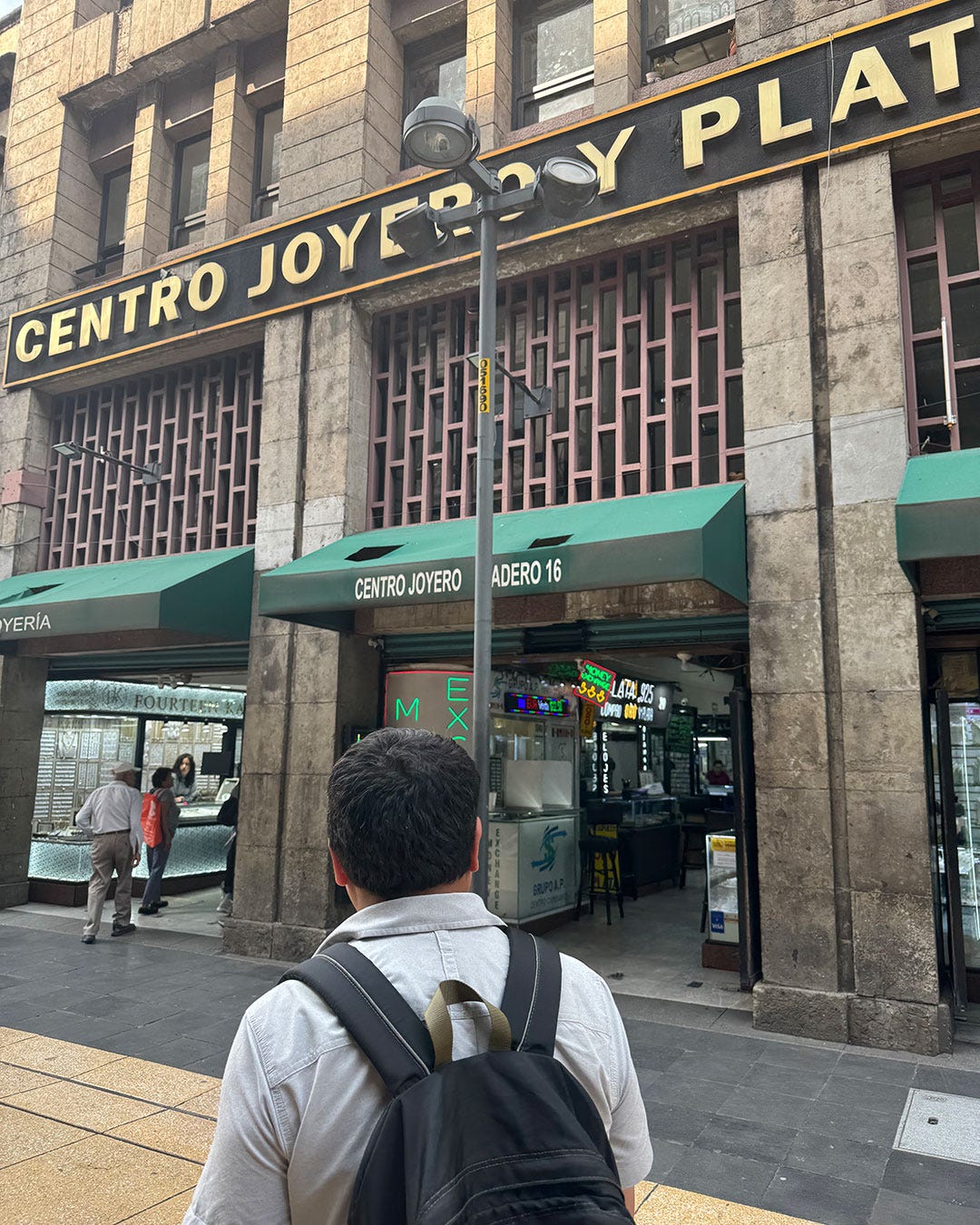
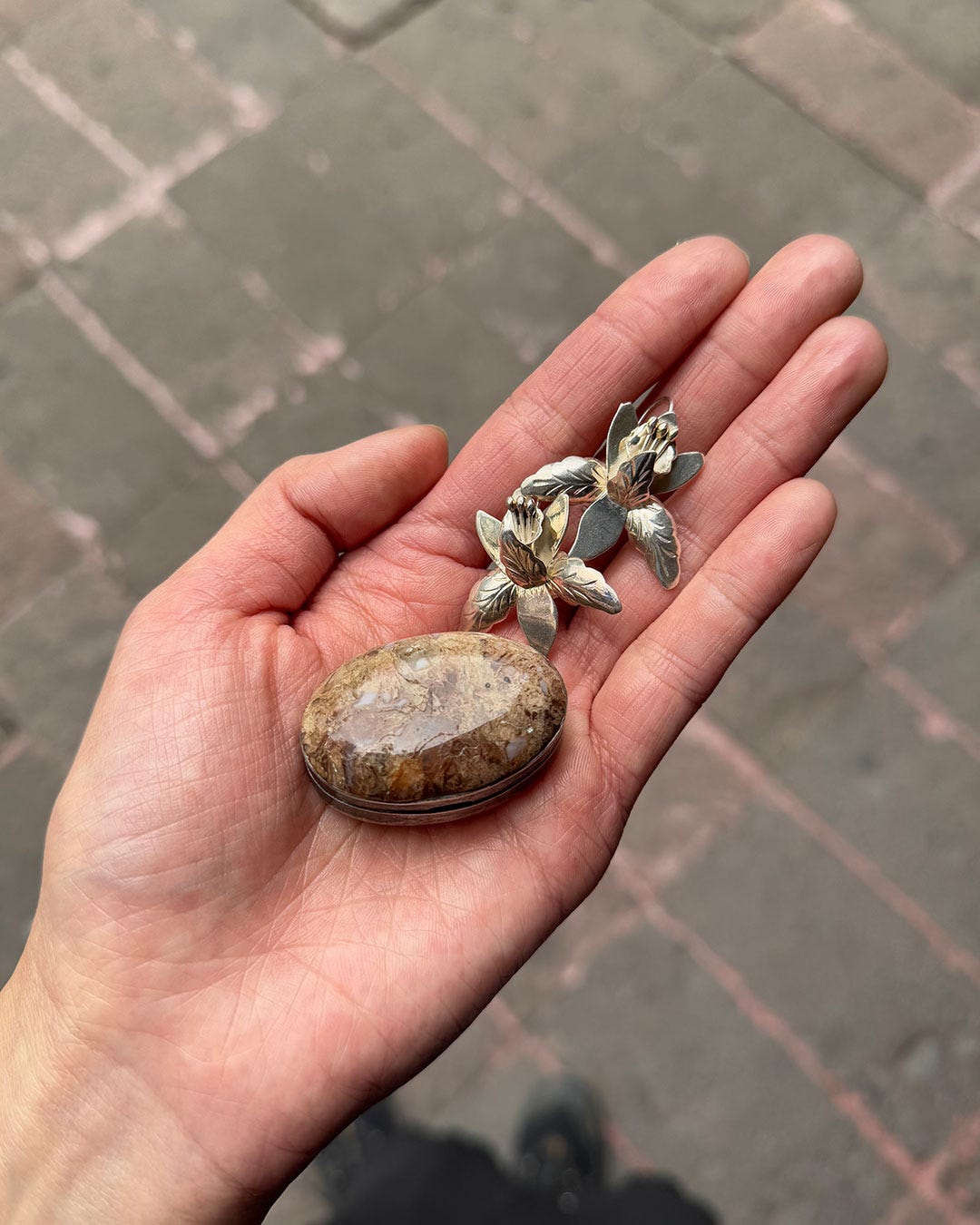
I adored this read! It's so wonderful to see how your openness and magnetic personality lead to such amazing experiences :) Thank you for sharing!